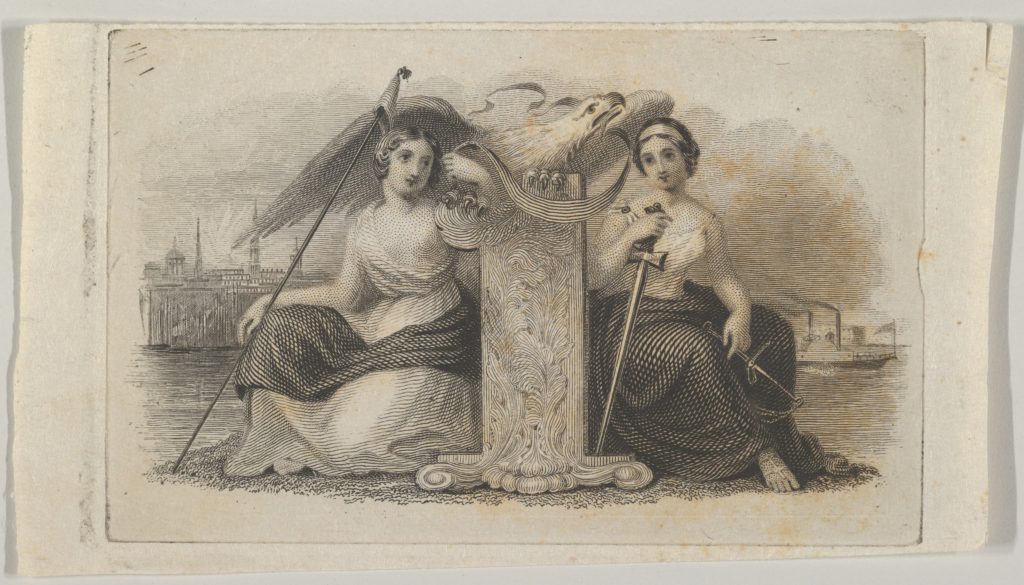Like many others, I found myself reading response after response after response to cOAlition S’ call for feedback on the Guidance on the Implementation of Plan S last week. The volume of response is staggering. Statements have poured in from individual and groups — publishers, scholarly societies, disciplinary repositories, scholarly communications platforms, funding agencies, publishing professionals, libraries, library associations, and researchers themselves. As the deadline drew near on Friday, I could hardly “right click/open link in new tab” fast enough as my Twitter feed scrolled by. The input from Norway alone has reached 885 pages. The Open Access Tracking Project currently has almost 400 documents tagged oa.plan_s. reddit Open Science and Scholia/wikidata have also been tracking replies. One imagines that there is feedback that has not been shared publicly as well.
cOALition S members have a large task ahead of themselves to review and engage with the commentary they have received. On the feedback form, the cOAlition stated that “in the spirit of Open Access, all responses received as a part of the feedback on the Guidance on the Implementation of Plan S will be shared in the public domain.” I hope that we will also see some sort of summary report eventually in addition to the full text of the replies.

In the meantime, I thought it might be useful to share some of the themes that I have observed emerging across the feedback documents. These are impressionistic and not a systematic analysis. I look forward to seeing comments about the themes that others have observed.
Theme 1: Clear support for the transition to open access and the goals of Plan S.
Almost universally, the responses affirm the desirability of open access publishing and continuing the progress towards full open access for scholarship. This quickly became so obvious that I started paying more attention to how the rhetorical move was made in each document, transitioning from a statement of the support for the goal of open access to the critique that was about to be made of the mechanisms detailed in implementation guidance. The nature of that rhetorical move often set up the overall tone of the particular response as more positive or more negative.
Theme 2: Concern that the implementation guidance reflects models that work for STEM but will negatively impact HSS scholars.
The Guidance from cOAlition S goes into much greater detail about article processing charge (APC) funding than any other business model for open access publishing. Research funding structures in the sciences already provide a mechanism for paying these APCs, evidenced by the millions already being spent on APCs annually. APCs are not dominant currently in the humanities and social sciences (HSS) and few social scientists and almost no humanists are confident of having sufficient financial support to pay APCs if subscription journals convert to APC-based open journals. The impact of the specified CC BY licenses also received a great deal of comment, particularly with respect to work in the humanities. Respondents are generally pushing to move away from one-size-fits-all models and asking for specific financial support for and detailed attention to non-APC-based business models as well as allowance for the full range of Creative Commons licenses.
Theme 3: The technical requirements for publication, repository, and other platforms are poorly thought out.
First, there is a great deal of confusion about what the requirements actually are, particularly with regard to transitional agreements and the requirements for hosting author manuscripts. There are also comments that some or all of the requirements are unnecessary for open access or untenable for all but the largest players. Finally, there are concerns that some technical requirements seem strangely or narrowly specified; specifically, that they are stated in ways that unnecessarily tie the Guidance to current technology tools and standards and could thereby prevent innovation going forward.
Theme 4: The predicted effects on small, independent, and society publishers raise concerns for the viability of these publishers.
Plan S favors large scale publishers, particularly those with capital reserves to invest in technology, workflows, etc., and to protect against any dips in revenue during transitions. Small, independent, and society publishers are already under pressure from both the Big Deal model for subscriptions and the current transition to open access. Many already have contracted with or sold to larger publishers, leading to a consolidation in the industry. For those publishers with greater than average volume from cOAlition S-funded researchers, the almost immediate prohibition on researchers publishing in hybrid journals could lead not only to greater consolidation but — for societies — elimination of other services or even insolvency of the societies themselves. The difference between the currently slower transition to open access and the faster transition under Plan S could mean the difference between survival and extinction.
Theme 5: Setting a fair and reasonable APC sounds fair and reasonable but it is also likely impossible.
Beyond the logistics of documenting all costs, direct and indirect, as well as surpluses, and the complexity of establishing consensus around acceptable savings, overhead, etc., commercial companies are prohibited from sharing at least some of what would be relevant information publicly by various laws and regulations.
Theme 6: Scholars and organizations in the Global South object to being told what they want.
As well-intentioned as it may be to be concerned about readers in low- and middle-income countries having access to publications to read, that does not obviate the problem that will be created for researchers in the Global South by imposing a system that demands payment for publication. Full and partial APC waivers attempt to address this issue of payment for publication but waivers are an imposed solution to a problem that is created by imposing a system.
Theme 7: The timelines are not feasible.
This is also nearly universal in the feedback. Even the most positive of feedback often questions the feasibility of the timelines in the Guidance.
Final Thoughts
In no way do these themes encapsulate every comment that I’ve seen; that would be impossible. There are definitely some unique and outlier responses. But, taken as a whole, the feedback documents I have read left me with the view that the Guidance on the Implementation of Plan S has been taken very seriously by the global scholarly communication and publishing communities.
There is enthusiasm and support for the overall goals of Plan S; however, there is also a great deal of concern about the implementation guidance and the very real possibility of negative unintended effects. As the Guidance is finalized, and as each funder begins to specify its choices about imposing the requirements, my hope is that we will see attention to mitigating the kinds of destructive effects that have been raised as concerns and to encouraging continued innovation in advancing quality scholarship.
Discussion
26 Thoughts on "Taking Stock of the Feedback on Plan S Implementation Guidance"
“Scholars and organizations in the Global South object to being told what they want.”
Hear! hear!
Journals are global, so policies that affect these journals will also have global repercussions. There is already a huge hurdle for access to published works for the Global South, on top of it there is a widespread discrimination of authorship/paper acceptance decisions, and now if one has to pay a hefty APC, the researchers of more than half of the World will get no dissemination of their research in established journals (on which their careers depend). They will be forced to launch their own journals, and we all know how such initiatives end.
thanks Lisa for this excellent summary post, I heard a society publisher last week say they were spending all their time on Plan S related issues, I didn’t get to dig in and ask the question, exactly how all this time and effort was broken down, but I can see just reading and keeping up with all the responses, opinions, ideas and critique, is no small task in itself (I suspect you have already saved quite a few ‘person hours’ with this summary alone 😉
I hope someone will do a word cloud and sentiment analysis. (Perhaps someone already has.)
Thanks for this summary, Lisa. And thanks for doing the reading it must have involved!
Dear Lisa,
You say “commercial companies are prohibited from sharing at least some of what would be relevant information publicly by various laws and regulations.” If two contract partners agree to make their contract public, what kind of laws might forbid that? In what countries?
I am neither a lawyer, nor an expert, but I have heard concerns raised about price fixing and anti-competitive behavior. Plan S is neither a law, nor a government policy, but it does attempt to define and limit programs, services, and pricing in a particular market. Because of this, it is likely illegal for groups of publishers or industry trade groups to participate in such negotiations or to pool proprietary information in a manner that would potentially decrease market competition or fix prices. The penalties for such behavior are severe, so I’m not surprised that there’s a lot of reluctance around this notion, and that it’s likely that a lot more legal analysis and clear statements from governmental competition committees are going to be required to decide what’s allowable.
I’m confused by your question. The information that the Guidance details as required: “transparent costing and pricing: information on the publishing costs and on any other factors impacting the publication fees (for example cross subsidising) must be openly available on the journal website/publishing platform … details on direct costs, indirect costs and potential surplus” is quite different than just sharing publicly a contract between two parties.
If a publisher agrees to make these figures public then this is part of a contract, orally or laid down on paper. The statement says that commercial companies are prohibited to share this information. My question is who is forbidding that?
Oh, you are asking who regulates companies to prevent price fixing? Government.
No, no. It is about publicly sharing information. The effect will be the opposite of price fixing: competition.
Let me try to clarify (again, I am not a lawyer and am just going by the advice I’ve received from lawyers). There are laws against a group of companies colluding to limit the prices they pay to suppliers. Usually when publishers get together in industry trade groups, we have to take great care not to discuss pricing in any manner. The penalties for such collusion are extreme. Here, the requirements have the potential to expose publishers to such penalties.
If you want further information, I would suggest research into the EU Competition Commission, as well as laws against collusion and price fixing. I’m not aware of any other industry that is subject to such transparency requirements, particularly requirements coming from non-governmental bodies and requirements that are not laws, but instead policies (and in some cases, policies from private funding groups).
It may be possible for such regulations to be cleared by the EU Competition Committee, but until that is made expressly clear, the risk (penalties are often a significant percentage of annual revenues) is far too great to comply.
Apparently others disagree with you given their comments thi the cOAlition.
Does this transparency exist at the university level? Can one get, say in your own institution, an overview of expenses of each individual professor, team or chair versus the revenues?
American universities being mostly privately funded, it can be a good comparison to financial transparency policies of private universities vs. publishers.
I am not implying any negative opinion here, but just keen to know.
I believe for many public institutions, things like salaries are publicly available. But that’s only for “public” institutions owned and run by the state or the country, and you’d likely need to FOIA them. Private universities are under no such obligations, and here we’re largely talking about private companies and not-for-profits that are not government owned.
And of course disclosing salaries and overall expenses is quite different from creating a centralized database of the prices each university pays for each product or service it purchases.
I think the demand made from publishers here is “information on the publishing costs and on any other factors impacting the publication fees (for example cross subsidising) must be openly available”. Not about how much universities spend. So actually, private enterprises are asked to reveal their P&Ls from academicians who themselves would be uncomfortable publicly revealing their own R&R expenses, conference travel expenses and all the items paid by the university credit card. I am just wondering about this call for transparency of private enterprises by those whose transparency itself isn’t well-established.
Plan S is a set of demands from funders not from academics.
I can’t think of anywhere it exists like this. FWIW, I thought the way Martin Paul Eve framed his response to Plan S addressing this topic was weighe good. See https://eve.gd/2019/01/21/my-draft-plan-s-implementation-guidance-feedback/
“Plan S is a set of demands from funders not from academics.” – so academics/academic libraries don’t want Plan S? I thought the entire topic spread like a wildfire only when academic institutions and signature campaigns started supporting it.
Call me silly, but what is the point of this feedback?
As Smits said in public, it all will be read, but it will not affect his Plan S in any way. He sees it as a clarification step, nothing more. This is also how the consultations questions are formulated. To help those ill-informed ones understand and accept the grand scheme.
https://forbetterscience.com/2019/01/15/plan-s-in-chaos-at-berlin-ape-conference/
And who will read it? Two men, John-Arne Røttingen and David Sweeney will read it, we are told. Or maybe just their personal assistants, who might just select the most celebratory Plan S bits and supplicate them upstairs. Will Smits himself read it? Not likely, he is as good as out, about to steer University of Eindhoven towards scientific excellence in OA.
So for whom all that effort then? Unless scientists and their societies submit same feedback is to national and EU funders directly, they can just as well nail it to a tree in a forest.
I was also trying to pull together some sort of summary list of issues/criticisms – I think the post covers it well. Most, if not all, of the submissions I read stated support for the overall aims of Plan S, or at least OA. I had “guarded support” in my notes a few times.
FWIW, here is the list I have so far (ongoing).
– Timeframe is too short
– Lack of clarity and moving positions on policies around hybrid and transformative agreements
– Academics not consulted; potential impact on ‘academic freedom’
– Forcing a one-size-fits-all model, led by Gold OA model
– Few current journals actually meet the requirements, even ones trying to change to OA. Refer to timelines point.
– Role of preprint servers and repositories unclear
Thanks – it’s nice to see alignment of our lists. Guarded support is a good way to phrase it!
I almost included the issue of academic freedom/not consulted but decided that was dominate in the analysis I saw about the Plan S Principles but not in the feedback on the implementation guidance. If my sense is right (we need text mining!), it is interesting to consider why that shift occurred.
Academic freedom is specifically to research as you see fit, and to publish what you research. It is not freedom to limit the dissemination of publicly funded research by publishing behind paywalls. And even if it were: academic freedom was created by humans in the 19th century (not so many years ago), and so can be changed by humans in the 21st century to make it more consistent with current social values.
See the following for some thoughts on Academic Freedom:
https://scholarlykitchen.sspnet.org/2018/03/05/open-letter-aaup-faculty-authors-full-freedom-publication/
and
https://scholarlykitchen.sspnet.org/2018/11/05/open-access-academic-freedom-and-the-spectrum-of-coercive-power/
That’s one definition of academic freedom and one that many would recognize. I’d note, as an example, that Germany has in its conception the freedom to choose where you publish as well. So, as a pragmatic result, Wiley DEAL agreement includes that, even though the agreement requires paying a publish+read fee for every article which includes making the article open, a researcher is free to choose to publish their article closed if they so choose. In other countries, the freedom of researchers is restricted more tightly than what you describe and it’s still called academic freedom.
Of course these things can change. But, it is important I believe to not confuse what we believe should be with what is.
Great summary:
1. Plan S has been conceived and supported so far by slightly over a dozen European countries and similar number of founding agencies; however, it will have profound effect on the rest of the world. I believe that consensus reaching a much wider community should be reached before taking any such drastic measures.
2. “hybrid open-access journals are not compliant with the key principle”
This ultimate statement may need some explanation why this is the case. In our view, it is a matter of opinion. If the key principle is to make all publications public, coAlition S might have a valid point. However, such principle maybe beyond jurisdiction of coAlition S funders. Hybrid form allows for democratic process, free choice and plurality which also are key principles of the modern world. Similarly, why mirror journals are not allowed either?
In the diamond/ platinum no-APC / no budget world, not particularly targeted by Plan S and it’s funders for reform , we actually get caught out. The only things that really stand out are meeting potential archiving costs (clockss or similar) and generation of machine readable XML files instead of the usual PDF. We are worried we will be deemed non compliant. This issue affects thousands of journals on the DOAJ, and more generally those with no budgets for either of these two technical issues. Most journals produced in Latin America by departments and universities for example, would be deemed non eligible.



